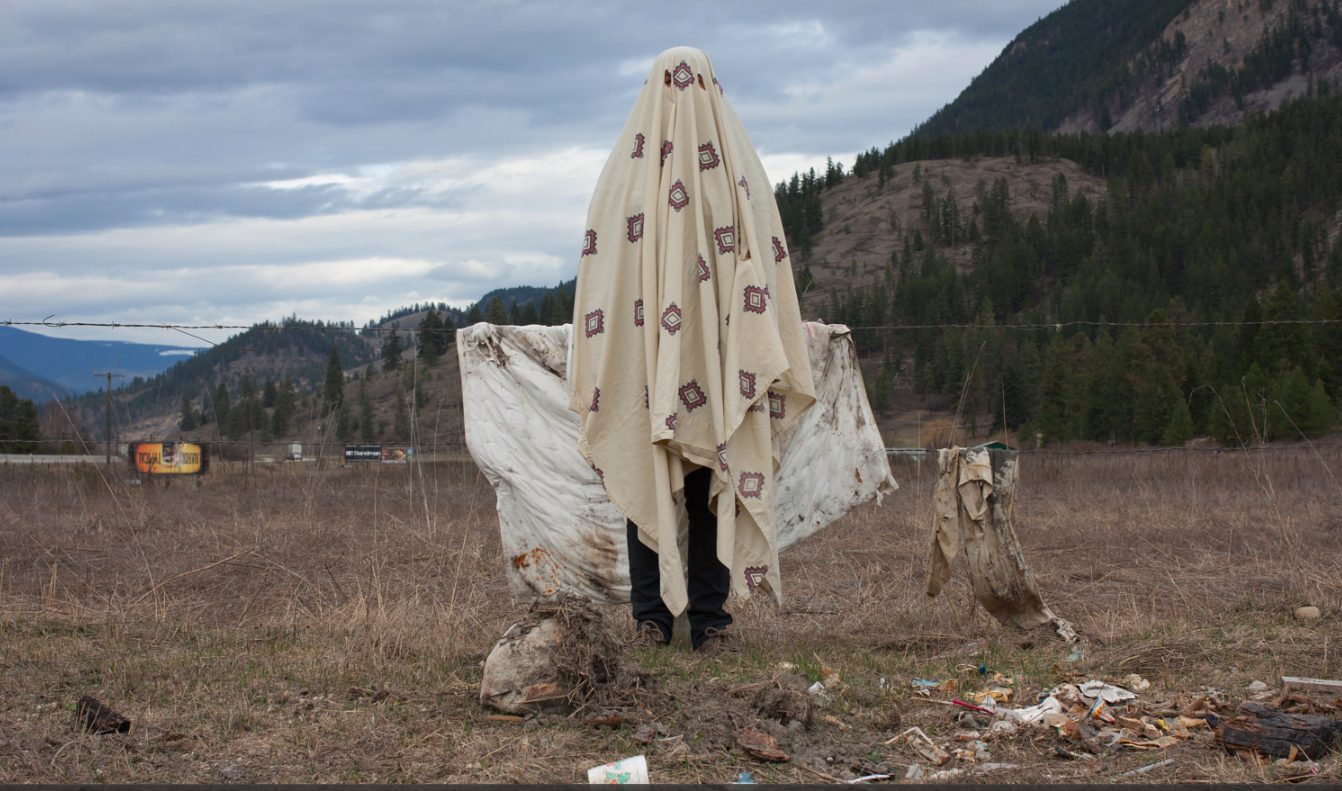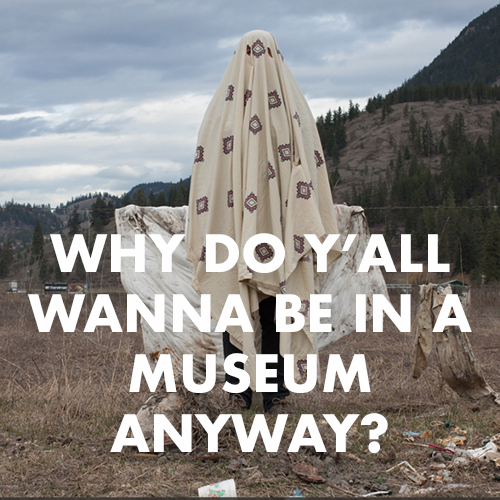
Tania Willard (Secwepemc Nation). #haunted_hunted.
WHY DO Y’ALL WANNA BE IN A MUSEUM ANYWAY?
EVEN THOUGH WE UNDERSTAND THE MUSEUM AS A COLONIAL INSTITUTION,
EVEN THOUGH WE KNOW RECOGNITION FROM THE INSTITUTION DOES NOT MEASURE OUR VALUE,
the museum can really get into our heads! They shape public consciousness, especially among well-meaning liberal folks. These institutions have the potential to make us think differently and grow, but they can also keep us complacent by affirming tepid politics.
Tony Bennett and Simon Sheikh are both interested in the *mind-control* aspects of museums as arms of the state.
Bennett, Tony. “The Exhibitionary Complex. new formations, no. 4 (1988): 73-102.
How does the museum train visitors to think and behave? How do we give power to the museum by thinking of it as a truth-teller? Do you feel smarter when you leave the museum?
Sheikh, Simon. “Constitutive Effects: The Techniques of the Curator.” In Curating Subjects, ed. Paul O’Neill, 147-185. Open Editions, 2007.
On Inclusion
Schmelzer, Paul. “How Can Contemporary Art Be More Inclusive of Native Voices?” Walker Reader, 12 Oct. 2017.
Artists Dyani White Hawk (Sicangu Lakota), Jeffrey Gibson (Mississippi Band of Choctaw), Luzene Hill (Eastern Band of Cherokee), and Candessa Tehee (Cherokee Nation), and curator Kathleen Ash-Milby (Diné) on their experiences in contemporary arts spaces, museums, and educational settings and the ways in which museums might move forward.
See also: WHAT’S RECOGNITION?
On Unsettling Colonial Spaces
Barnd, Natchee Blue. “Introduction.” and “The Space of Native Art.” In Native Space: Geographic Strategies to Unsettle Settler Colonialism, 1-17 and 124-148. Corvallis: Oregon State University Press, 2017.
